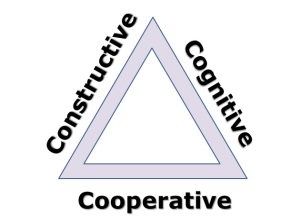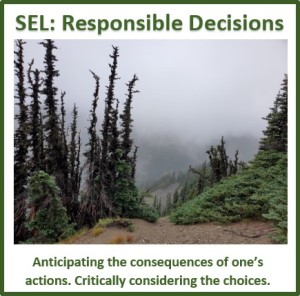Cooperative learning environment with constructive learning design and cognitive learning approach is more important in schoolyear 2020 than ever before! I wish to empower every teacher to choose how they teach!
The new normal requires every school and every teacher to reconsider how we educate the next generation. It is quite simple: just focus on emphasizing learning instead of instruction. We can’t afford failing to engage ALL students in their own learning process, because it is the best way to support students’ intrinsic motivation and mastery goal orientation that leads to deeper learning (check this [1] APA site).
Helping students self-engage with voice and agency increases their academic performance, because just pushing for completing tasks or worksheets leads to very limited engagement and learning (check this [2] ASCD blog). Deep learning is about students acquiring transferable knowledge and skills through their learning experiences – therefore it is crucial to make differentiation and indvidualization a standard practice in every classroom (not just in special education!).
Instruction that is not personalized leads to students choosing the less beneficial engagement approaches: surface approach (participating enough to pass the test/getting an acceptable grade, not interested in learning) or strategic approach (ace the test to get straight A’s, then forget it all). Both of these are focusing on compliance and participation, instead of engagement on personal level. Engaging students in their own learning process requires a paradigm shift, but it IS possible to do. The 3Cs provide the roadmap for switching from focusing on instruction to focusing on learning.
C1 – Cooperation is the foundation for successful online learning – we just can’t hold people accountable over the distance, so spending time in trying to do that is wasted effort and time. Students always have agency: a choice about their own beliefs and actions. But, we can support students’ learning process and help them learn (instead of focusing on teaching). Getting rid of the “sage on the stage” thinking and becoming the “guide on the side” is a great way to start building a cooperative practice. Cooperation in the beginning of a school year looks like this: Provide emotional support for students by validating concerns and offering indivualized help, continuously showing positive regard. Offer help every day. Repeat offering help and support every day. Emotionally safe learning environment is the first premise for effective learning. If students are scared or worried, learning is not their highest mental priority, surviving is.  Constructive learning design supports students’ learning process. Make sure to balance the three dimensions of teachers’ pedagogical knowledge: instructional process, learning process and assessment – in physical classroon the instructional process can easily become overemphasized. Now is the time to change that! Build flexible learning entities from the curricula that make sense to students and remember that these can easily integrate two subjects! Build ongoing feedback to keep the learning process going – shared documents, portfolios, blog posts, presentations, videos, etc., emphasizing the open-ended nature of students’ learning. Remember to share a clear rubric with students! [Check this post about student-centerd assessment practices!]
Constructive learning design supports students’ learning process. Make sure to balance the three dimensions of teachers’ pedagogical knowledge: instructional process, learning process and assessment – in physical classroon the instructional process can easily become overemphasized. Now is the time to change that! Build flexible learning entities from the curricula that make sense to students and remember that these can easily integrate two subjects! Build ongoing feedback to keep the learning process going – shared documents, portfolios, blog posts, presentations, videos, etc., emphasizing the open-ended nature of students’ learning. Remember to share a clear rubric with students! [Check this post about student-centerd assessment practices!]
Focus on cognitive learning approach by supporting students’ metacognition (or, thinking about thinking/learning about learning). Teaching metacognitive knowledge and skills is an important part of supporting deep learning in all levels of education! It just looks different: for very young students we try to help them on a path of self-efficacy and positive academic self-concept by supporting self-regulation and concept development; for grad students we offer support in managing the self-regulated learning process and self-evaluation/self-judgment.

Help students by discussing Growth Mindset as an important part of understanding one’s own learning process. Provide various ways to organize one’s own thinking: graphic organizers, mindmaps, taxonomies, color coding, etc., and emphasize that there are many different ways to learn something new. Make a list of shareable learning strategies you can recommend to students at any time. Include self-reflection as a standard practice – model it by thinking aloud, help students verbalize what they have learned, help them think what they might do differently or how they could make their schoolwork (stories, presentations, videos, etc) better. Always emphasize learning being a process!
Fostering learning process is actually very simple. In addition to open-endedness there are some other qualities in my mind I decided to name as CAFÉ
Communicate. Have a dialogue with your students, the most effective communication is reciprocal and includes negotiations of meaning.
Acknowledge their competence, and help to add into it. Validate their knowledge and understanding.
Feedback early and often. Provide feedback about the process (think of mapping the ground that lies ahead them, it is easier to steer clear when you know where the pitfalls are).
Encourage and empower. Support their choices. Point out other possible directions (make sure not to choose for students).
And just like coffee, or life in general, also learning is best when we can enjoy it!

I hope you enjoy!
🙂
Nina
Other posts about 3Cs and supporting learning process:
3 Superior online strategies
Is learning process or product
Teaching dispositions
Self-determination
Learning-centered education
References:
[1]McCombs, B. L. (2010, February 16). Developing responsible and autonomous learners: A key to motivating students. American Psychological Association. http://www.apa.org/education/k12/learners
[2] Seif, E. (2018, November 16 )Dimensions Of Deep Learning: Levels Of Engagement And Learning. Association for Supervision and Curriculum Development. https://inservice.ascd.org/dimensions-of-deep-learning-levels-of-engagement-and-learning/
Tags: co-operative, cognitive, constructive, Deep Learning, Learning Design, Learning Process, pedagogy, reflection, student centered, teaching
















